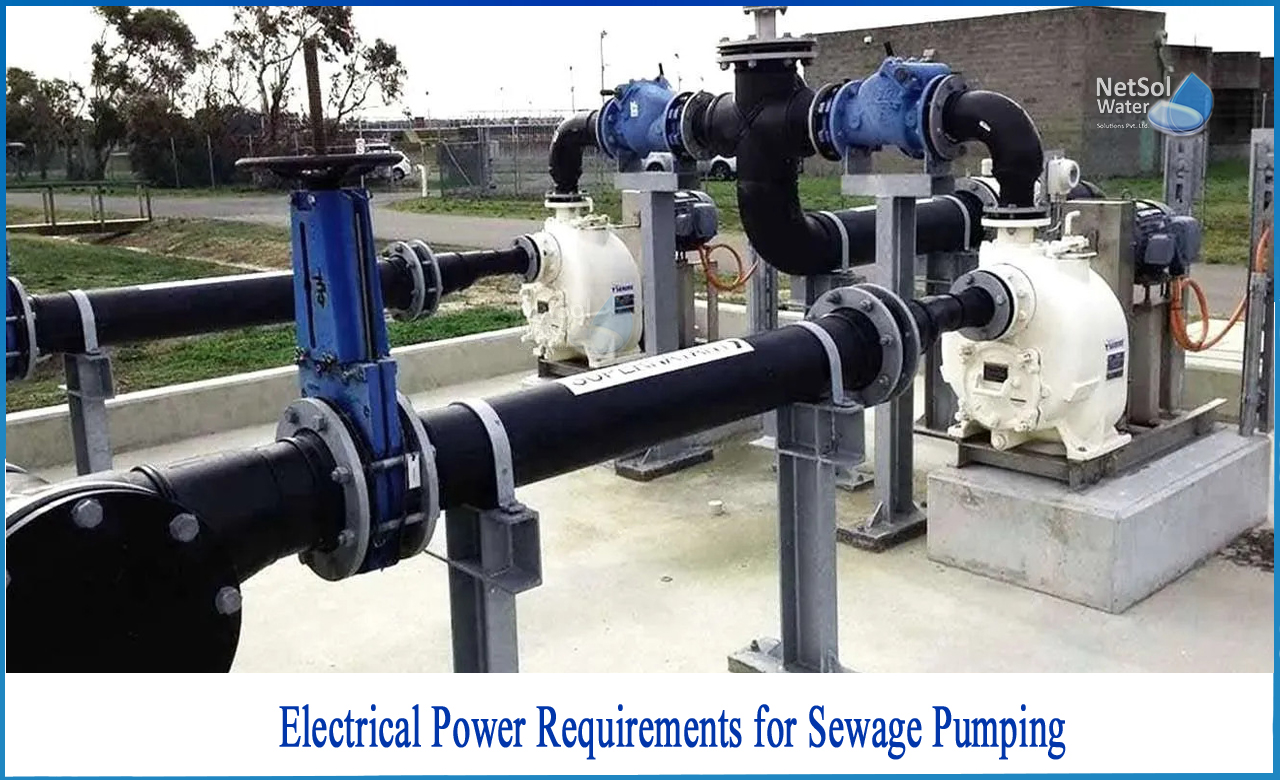History of sewage pumping
Sewage pumping became popular in the early 1960s, when a guide rail system was created to raise the submersible pump out of the pump station for repair. This eliminated the filthy and sometimes dangerous task of sending workers into the sewage or damp pit. Vertical sewage pumps have also been used for many years. They've elevated the motor above the ground level so that maintenance may be performed without entering the sewage pit.
Necessity of pumping of sewage
Sewage pumping stations are designed to handle raw sewage that is fed from underground gravity pipelines. They are used to lift wastewater to higher elevations.
In general, the need for sewage pumping stations arises:
i) When a section of a town or city is low lying, gravity may not be able to drain the low lying area into a sub main or main at a higher level unless the entire drainage system in the remaining higher area is laid at a correspondingly lower level.The existing topography allowing sewage to flow by gravity have higher construction costs. The sewage is elevated and then conveyed by gravity.
ii) Basementfloors are too low to discharge sewage to the main sewer by gravity.
iii) Sewage line is conveyed over a ridge.
iv) Pumping sewage into sewers placed across the slope of the hill at suitable depths, rather than driving a tunnel, may be more cost-effective. The sewage must be raised to get the required head for gravity flow through a treatment plant.
v) Discharge outlets are at lower level of the receiving body of water.
vi) A lifting station will enable development and growth in accordance with the applicable community plan.
How much Electrical power requirements for Sewage Pumping?
Pumping of sewage at wastewater treatment plants that are large and energy-intensive include
a) Incoming raw influent wastewater is lifted, for example, by screw pumps.
b) Return of sludge in activated sludge operations, using centrifugal pumps, for example;internal nitrification/denitrification recirculation, such as using propeller pumps;
c) Wastewater is fed into trickling filters through centrifugal pumps, for example; Backwashing and feeding of sand filters;
d) Pumping of raw sludge, e.g. via positive displacement pumps;
e) Recirculation of sludge during digester heating and mixing, using centrifugal pumps or draught tubes.
Power consumption can be minimized by:
a) Flow reduction, for example, by enhancing return sludge concentration, or the use of variable speed pumps, might reduce power usage.
b) Reduced head, for example, by an improved hydraulic plant profile (which must be balanced against high excavation and building costs);
c) Reduced head loss, for example, by flow reduction, improved pipeline or channel sizing and layout;
d) Correct pump sizing, both in terms of head and flow;
e) Pump selection based on pump and drive energy efficiency, with specific attention to efficiency at duty point;
f) Screening prior to pumping to allow for the usage of energy-saving pumps;
g) There will be no grinding since it requires more power and coarse solids should be eliminated;
h) Pump control optimization, for example, by selecting parallel pumps of varying capacities or using variable frequency control.
What can we offer?
Netsol Water is one of India's major water and wastewater management company, specialized in the design, manufacture, and delivery of custom-made treatment systems, industrial machinery, and luxury amenities for the water industry.
Netsol Water is Greater Noida-based leading water & wastewater treatment plant manufacturer. We are industry's most demanding company based on client review and work quality. We are known as best commercial RO plant manufacturers, industrial RO plant manufacturer, sewage treatment plant manufacturer, Water Softener Plant Manufacturers and effluent treatment plant manufacturers. Apart from this 24x7 customer support is our USP. Call on +91-9650608473, or write us at enquiry@netsolwater.com for any support, inquiry or product-purchase related query.



